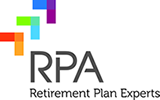Company contributions to a profit sharing plan are usually made on a discretionary basis. The maximum contribution is generally limited to 25% of the total compensation of eligible employees. (Note: contribution levels were increased by the Economic Growth and Tax Relief Reconciliation Act of 2001).
Each year the Board of Directors decides the amount to be contributed to the plan. If the company is having a bad year, the Board can elect not to make a contribution. If the company is having a good year, contributions can be as high as 25% of eligible compensation.
Generally contributions are allocated pro rata–each participant receives a contribution in proportion to his salary.
Example: Assume the Board of Directors of ABC Company decides to make a $10,000 contribution. The contribution is allocated on a pro rata basis, so each eligible employee will receive 5.71% of compensation ($10,000 [contribution] $175,000 [total compensation of all eligible employees]).
| Eligible Employee | Compensation | Contribution |
| Jim |
$100,000 |
$5,714 |
| Sue |
$50,000 |
$2,857 |
| Joe |
$25,000 |
$1,429 |
| Total: |
$175,000 |
$10,000 |
Allocation formulas may also be designed to:
- Take Social Security into account, resulting in a proportionately larger share of the contribution being allocated to highly compensated employees
- On an age-weighted basis resulting in a larger share of the contribution being allocated to older participants
- On a cross-tested, or new comparability basis, allocating contributions based on various job categories

